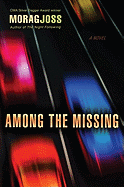
| Publisher: | Delacorte Press | |
| Genre: | General, Suspense, Psychological, Fiction, Mystery & Detective | |
| ISBN: | 9780385342742 | |
| Pub Date: | June 2011 | |
| Price: | $25 |
| Fiction |
by Morag Joss
"Of course I have wondered if you are dead, but you aren't. It isn't possible. I need you too much for you to be gone forever."
This all-too-human sentiment weaves together the lives of three otherwise unrelated characters in Morag Joss's (Half-Broken Things) most recent novel, Among the Missing. Joss explores the aftermath of a bridge collapse in a small tourist town in Scotland; with several people dead and still more unaccounted for, those left behind have to deal with a story that has pieces missing.
Each of Joss's three main characters brings a different perspective to the events surrounding the collapse. Silva, the one left behind, clings to the hope that her family is still alive; Annabel is one of the missing, a confused, lonely woman who has used the tragedy to start anew; and Ron, struggling to find direction for his life, who suddenly finds himself with a sense of purpose derived from the tragedy of the bridge victims.
The novel is slow but steady, a mystery that strolls through events rather than rushing them. It is this subtlety that makes the novel successful; though the collapse of the bridge is dramatic in its own right, it is what follows that allows Joss to delve into the very human side of grief and loss. Among the Missing achieves the remarkable feat of allowing us to know both what it is to be left behind and what it is to be the one leaving. --Kerry McHugh, blogger at Entomology of a Bookworm
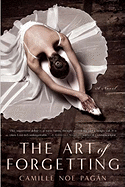
| Publisher: | Dutton | |
| Genre: | Fiction, Contemporary Women | |
| ISBN: | 9780525952190 | |
| Pub Date: | June 2011 | |
| Price: | $25.95 |
| Fiction |
by Camille Noe Pagan
Camille Noe Pagán's engaging debut novel offers a vision of "what might have been" for timid Marissa Rogers. Marissa is an editor for Svelte, a women's health magazine, whose readers are, not surprisingly, more interested in celebrity diets than they are in health issues. At the beginning of the novel, Marissa's longtime friend Julia Ferrar--whose assertive nature has always complemented Marissa's diffidence--is hit by a car and suffers a traumatic brain injury that drastically modifies her personality. While some of the side effects Julia experiences--minor memory loss, a higher-pitched voice and a fixation on all things purple--are relatively innocuous, others churn up memories from Marissa's past that she would rather forget, including the ex-boyfriend she gave up at Julia's request.
Pagán's dialogue is punctuated with piquant wit and snappy pop culture references, resulting in an upbeat, inspirational novel that tackles the serious topic of traumatic brain injury with warmth and sincerity while avoiding preachiness. At the heart of Marissa's transformation is her evolution from reluctant volunteer for Take the Lead--an organization inspired by the real Girls on the Run--into a confident woman, grateful for the lessons she learns from the girls she is meant to be teaching. Marissa discovers she has the power to be the self-confident woman she once saw in her best friend. Fans of Elizabeth Berg are sure to enjoy this exciting new voice. --Sarah Borders, librarian, Houston Public Library
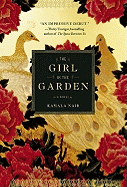
| Publisher: | Grand Central | |
| Genre: | General, Fiction | |
| ISBN: | 9780446572682 | |
| Pub Date: | June 2011 | |
| Price: | $24.99 |
| Fiction |
by Kamala Nair
While her lover sleeps, a young woman named Rakhee Singh slips off her engagement ring, leaves it on the nightstand and sets off from metro New York to India on a journey to reclaim her past and, she hopes, to rediscover herself.
The powerful first chapter that opens Kamala Nair's debut novel, The Girl in the Garden, encourages the reader to take up the narrator's cause as she travels eastward in the present and inward back through time. In this quietly told, incredibly gripping novel--narrated in one long flashback--we meet a series of fully drawn characters embroiled in domestic complications. Rahkee recalls the summer of her 10th year, when her emotionally troubled mother mysteriously whisks her daughter away from home and father in Plainfield, Minn., back to her ancestral village in India. Once there, Rakhee becomes acquainted with an unfamiliar culture and relatives she had never known, and discovers a walled garden hidden behind the family home. She and her young cousins are told the garden is off-limits--a rakshasi, or witch, is said to inhabit it.
This restriction piques Rakhee's interest; she decides to see for herself who or what resides in the thicket. It's not what she expected, of course. At the heart of the garden and the novel are family secrets. The hidden garden becomes a metaphor for what happens when we compartmentalize the sorrows and challenges of our lives and the consequences of hiding from the truth rather than facing it. These central issues ultimately force Rakhee to circle back to the present and reconcile her own life's contradictions. --Kathleen Gerard, blogger at Reading Between the Lines
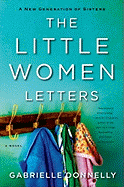
| Publisher: | Touchstone | |
| Genre: | General, Fiction, Romance, Contemporary Women | |
| ISBN: | 9781451617184 | |
| Pub Date: | June 2011 | |
| Price: | $25 |
| Fiction |
by Gabrielle Donnelly
Rummaging in her parents' London attic, Lulu Atwater stumbles onto an unexpected treasure: a stack of letters written by her great-great-grandmother, Josephine March--known more familiarly to readers as "Jo," the irrepressible heroine of Little Women by Louisa May Alcott. Lulu has always thought of Grandma Jo as dull and rigidly conservative, but the letters show her to be a different woman: a passionate writer, devoted to her family but also stubborn, outspoken and awkward, like Lulu herself. Struggling to find her place in the grown-up world, Lulu begins stealing up to the attic regularly, drawing comfort and inspiration from Grandma Jo's letters.
Author Gabrielle Donnelly (The Girl in the Photograph) captures Jo March's voice brilliantly, recounting scenes familiar to readers of Little Women (Beth's illness and death, Amy's European travels, Meg's domestic bliss) and adding a few new subplots. Her modern-day "little women"--Emma, calm and efficient; Sophie, blonde and dramatic; and Lulu, prickly but compassionate--reflect the March sisters' personalities and family dynamic while remaining distinct women.
As Lulu tries out various career paths, deals with difficult family secrets and even considers the possibility of love, she comes to appreciate the family that so often drives her crazy. The sisters' mixture of teasing banter, genuine affection and bursts of frustration will be familiar to any woman who has a sister. The Little Women Letters is a warm homage to Louisa May Alcott's famous family, but it's also a love letter to the ties that bind--and an encouragement to anyone who's ever wondered how to navigate adulthood without a road map. --Katie Noah Gibson, blogger at Cakes, Tea and Dreams

| Publisher: | Mulholland Books | |
| Genre: | General, Suspense, Crime, Fiction, Mystery & Detective, Thrillers, Action & Adventure | |
| ISBN: | 9780316133289 | |
| Pub Date: | June 2011 | |
| Price: | $14.99 |
| Mystery & Thriller |
by Duane Swierczynski
Duane Swierczynski's Fun & Games, the first in a trilogy, is aptly titled--like an amusement-park ride, it blows your hair back and leaves you gasping for more. What the title doesn't tell you is that the games being played are deadly, and the fun is had by stone-cold killers.
Protagonist Charlie Hardie is a professional house-sitter whose latest assignment is minding a film composer's lair in the Hollywood Hills. All he wants to do is spend the week on the couch drinking and watching DVDs. Instead, he finds drugged-up actress Lane Madden hiding in the house, yammering about how "they" are out to get her. Her claims are soon proven true, and Charlie gets caught up in her life-or-death struggle, trying to vanquish the ruthless people who are determined to trap and kill the two of them. Along the way, Charlie discovers why the killers are targeting Lane, a reason almost as terrible as his own secrets.
Charlie is the most entertaining protagonist I've met in a long time. He's a reluctant hero who fights back only when he's angered, like a sleeping bear who's been poked with a stick. Once on the warpath, though, there is no stopping him. Lane is a resilient yet vulnerable character whose life hasn't been made easier by her fame and beauty.
The pulp noir-ish story has more turns than the twisty L.A. canyon roads that provide its setting, and the pacing is as fast as a car careening down those same roads without brakes. Charlie Hardie is a winning protagonist I'll follow to Hell--Hell & Gone, that is, the next installment, coming this October. --Elyse Dinh-McCrillis, chief nerd and blogger at Pop Culture Nerd.
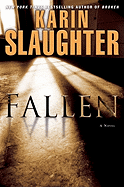
| Publisher: | Delacorte Press | |
| Genre: | General, Suspense, Fiction, Mystery & Detective, Thrillers | |
| ISBN: | 9780345528209 | |
| Pub Date: | June 2011 | |
| Price: | $26 |
| Mystery & Thriller |
by Karin Slaughter
Karin Slaughter's latest work of suspense has all the elements her readers have come to expect: likable, well-developed characters; an array of strong women; fast-paced action; and surprising plot twists. This story of family relationships, with its underlying threads of romance, violence and taut suspense, will satisfy fans of Lisa Gardner or Lisa Scottoline as well as Slaughter's own.
When Georgia Bureau of Investigations Special Agent Faith Mitchell arrives at her mother's house to pick up her daughter, Emma, there's blood on the door, and the baby's been hidden in the shed. Retired Atlanta police captain Evelyn Mitchell is missing, but her house is not empty; Faith goes in with guns blazing, and the blood flows.
The clock ticks in the search for Evelyn as the case is further complicated by shifting suspicions and questioned loyalties. We share Faith's concern for her family and her need to be involved, despite a clear lack of professional detachment. Her partner, Will Trent, aches to help her, but his past investigation of her mother's unit compromises their relationship. Sara Linton, a local doctor with ties to law enforcement, struggles to balance her role in the case with a budding personal relationship with Will. Meanwhile, Amanda Wagner, Will's boss and Evelyn's best friend, might be playing both sides of the fence.
Slaughter weaves intense and unrelenting suspense while compelling readers to care about the very real and human characters involved, whose backgrounds and conflicting loyalties we sympathize with even as we see their flaws. --Julia Jenkins, librarian and blogger at pages of julia
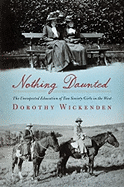
| Publisher: | Scribner | |
| Genre: | United States, History, Biography & Autobiography, Women, 20th Century | |
| ISBN: | 9781439176580 | |
| Pub Date: | June 2011 | |
| Price: | $26 |
| Starred | Nonfiction |
by Dorothy Wickenden
The first years of the 20th century saw a U.S. frontier "settling up" at astonishing speed, with dugout homes and canvas-roofed log cabins hanging on alongside new hotels and ever-increasing railroad lines. It also brought a number of changes for women, with the suffrage movement in full swing and young ladies of means being urged to work for the social good before (or in addition to) arranging a "good" marriage.
Into this world came best friends and fellow Smith graduates Rosamond Underwood and Dorothy Woodruff, later grandmother of author Dorothy Wickenden (executive editor, the New Yorker). Bored with the endless round of tea parties, picnics and dances in New York but not yet ready to marry, Ros and Dorothy set out in 1916 to teach school in Elkhead, Colo., miles from the nearest town.
Nothing Daunted, based on the women's letters home during those nine months, is more than mere history. It's also an enthusiastic and clear-sighted look into the lives of two women who started teaching as an adventure and finished better than they began. To Dorothy and Ros, everything in Colorado was exciting, from the beautiful mountain views to the neck-deep winter snows and the knee-deep spring mud.
Although their tale could easily have become a stereotypical "rich woman's burden" story, Wickenden skillfully avoids this trope by focusing on the humanity of the settlers, the schoolchildren and her main characters. The result is an intimate and joyful work that captures the best spirit of the 1910s--and today. --Dani Alexis Ryskamp, blogger at Intractable Bibliophilia
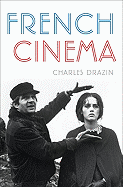
| Publisher: | Faber & Faber | |
| Genre: | Performing Arts, Film & Video, History & Criticism | |
| ISBN: | 9780571211739 | |
| Pub Date: | June 2011 | |
| Price: | $22 |
| Nonfiction |
by Charles Drazin
If you get up for a refrigerator break when they hand out the Academy Award for Best Foreign Film, this book is not for you. French Cinema by Charles Drazin (In Search of the Third Man), arguing that French films are usually better than American ones, is for the true believer, she or he who says "oeuvre" as easily as "Godard."
The book is not a general introduction to French cinema, but a carefully researched and detailed argument that, in essence, defends the "art" of French movies against the crass commercialism of Hollywood (read: American) films. Drazin begins with the birth of film in France, with Georges Méliès and the Lumière brothers, and argues that ever since, the history of French cinema has been a distinguished one, while the history of American film has been about the search for huge audiences and revenue. While the French film exudes a "timeless" quality, the Hollywood blockbuster reeks of the "ephemeral."
Along the way, Drazin provides exceptional insights and pithy summaries about successful French directors (Duvivier, Renoir) who went to America only to find their artistic voices stifled; a fascinating analysis of how the famous Cahiers du Cinéma crowd elevated French cinema as "art" as it denigrated American film as "popular"; and gives interesting social and political reasons why a few French films (Amélie, A Man and a Woman) found success in American markets.
Drazin gets a bit too snobby at times, but his critiques are perceptive. French Cinema will be enjoyed by informed cinéastes who love to debate the nuances between "good" and "bad" movies. --Tom Lavoie
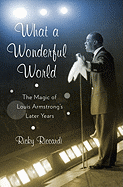
| Publisher: | Pantheon | |
| Genre: | Jazz, Cultural Heritage, Biography & Autobiography, Composers & Musicians | |
| ISBN: | 9780307378446 | |
| Pub Date: | June 2011 | |
| Price: | $28.95 |
| Nonfiction |
by Ricky Riccardi
There are two kinds of mid-century jazz fans: my father, who's all Benny Goodman, Glenn Miller and Louis Armstrong--you know, dance and swing; and me, who's all Miles, Trane, maybe Oscar Peterson and even Bad Plus--the introspective artists of improvisation. His old guys were just entertainers who played their fans' favorites; my guys played the music for the music's sake and themselves. Wrong!
Ricky Riccardi (jazz pianist, graduate of Rutgers' famous Institute of Jazz Studies and currently archivist for the Louis Armstrong House collection of Satchmo's audio tapes) tackles my common misperception in his first book, What a Wonderful World. Drawing on a wealth of original papers and personal tapes of the writing-averse Armstrong, Riccardi colors in the second half of Pops' remarkable career, the half critics wrote off as his "Uncle Tom," clown years. Riccardi shows that Armstrong was a consummate musician to the end, one whose goal was to give fans the best music he could while taking no guff from people who made his and his fellow black Americans' lives difficult, at best.
Through countless references, conversations, anecdotes and taped private moments of anger and frustration, Riccardi brings to life a complex man who was a genius in many ways. He shows us an Armstrong whose goodwill and big pop-eyed smile brought his native New Orleans music to millions of fans throughout the world, earning him a comfortable living and paving the way for the often brooding, and reclusive Miles and Parker and Trane who created their own modern jazz followings. --Bruce Jacobs, founding partner, Watermark Books & Cafe, Wichita, Kan.
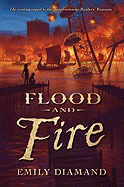
| Publisher: | Chicken House/Scholastic | |
| Genre: | Friendship, Science Fiction, Fantasy & Magic, Social Issues, Juvenile Fiction, Action & Adventure | |
| ISBN: | 9780545242684 | |
| Pub Date: | June 2011 | |
| Price: | $17.99 |
| Children's & Young Adult |
by Emily Diamand
Lilly, Lexy and Zeph, the irrepressible crew of Raider's Ransom, continue their struggle in the broken 23rd-century world that's left after an environmental and technological collapse. The swift-paced action begins where their debut adventure left off. Thirteen-year-old Lilly, primary user of possibly the world's last computer (the charmingly irritable PSAI), sets out to bring Lexy back to her father, England's prime minister. Zeph, now Boss of his marshland raider Family, is having trouble establishing his leadership. When the Family is threatened, Zeph must make a choice: betray Lilly or see his Family taken into slavery.
The trio who once traveled by sea now heads to London by land (in wind cars), where they hope to find Lexy's father and repair PSAI. Along the way, Lilly realizes, "They changed the land to fit the road!" She wonders about "them olden-times folks, who fought against their world even just to get about." Scenes such as this throughout the novel seamlessly deliver Diamand's environmental concerns. Eventually, all factions converge in a London that is in "a State of Violent Barbarism," according to the now-activated super computer. The English military, the raider Families and gigantic robotic spiders come together in a climactic clash. Lilly learns through her many losses that there is also an equal measure of gains. --Bette Wendell-Branco
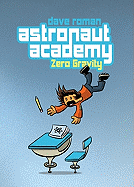
| Publisher: | First Second | |
| Genre: | Manga, Science Fiction, Fantasy, Comics & Graphic Novels | |
| ISBN: | 9781596436206 | |
| Pub Date: | June 2011 | |
| Price: | $9.99 |
| Children's & Young Adult |
by Dave Roman
Goofy comics abound for young kids and, in the adult section, Scott Pilgrim has conquered many hearts and minds, but it's been hard to find a title in the YA section that strikes that pitch-perfect balance of silly and serious. Astronaut Academy is here to change that.
Hakata used to be the leader of a team of superheroes, but now he's being forced to go to school like every other kid. The Astronaut Academy floats out in space and offers classes in fire throwing, "wearing cute hats" and advanced heart studies, but it turns out to be just like any other high school when it comes to unrequited crushes, boring classes and cliques. The plot starts with Hakata and loosely revolves around him (and his would-be robot assassin), but the heart of the book is in Roman's unveiling of the hero's classmates through a progression of short vignettes from many perspectives. Their friendships, rivalries and backstories are so well-written that the book feels twice its length. This combination of average high school drama with outer space superhero hijinx is potent and addictive, especially against the backdrop of Roman's art, which is definitely manga-inspired but has a life all its own.
It's a book that's got all the fun stuff--watches that stop time, a panda who teaches Spanish and, "randomly," a full panel of Tori Amos references--and all the good stuff, like love and friendship and learning what makes you happy, as well. --Stephanie Anderson, manager of WORD in Brooklyn, N.Y.
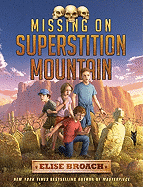
| Publisher: | Christy Ottaviano/Henry Holt | |
| Genre: | Friendship, Mysteries, Espionage, & Detective Stories, Social Issues, Family, Juvenile Fiction, Siblings, Historical, Parents, Exploration & Discovery | |
| ISBN: | 9780805090475 | |
| Pub Date: | June 2011 | |
| Price: | $15.99 |
| Children's & Young Adult |
by Elise Broach, illust. by Antonio Javier Caparo
At the start of summer, it seems as though anything is possible. Elise Broach (whose Masterpiece won the 2009 E.B. White Read Aloud Award) affirms this sentiment through the experiences of the Barker boys--Simon, Henry and Jack--who have just moved with their parents to Superstition, Ariz. The small desert town lies in the shadow of a reportedly haunted mountain that's absolutely off-limits, though no one will explain why. When the brothers, who range in age from six to 11, follow their beloved cat up the mountainside during the first week of summer and discover three human skulls on a rocky ledge, they know they've got a mystery to solve.
A spine-tingling adventure unfolds over the course of swift-moving short chapters, enhanced by Caparo's engaging black-and-white illustrations throughout. The Barker brothers' personalities vary widely, which makes for humorous dialogue, and the addition of their plucky friend Delilah ensures that this title will appeal to boys and girls alike. Broach fills her page-turner with legends based partly on facts, according to her fascinating author's note. (She writes, "To call Superstition Mountain a land equivalent of the Bermuda Triangle does not seem a stretch.") This first book in a planned mystery series is the perfect antidote to those summer doldrums. --Molly McLeod